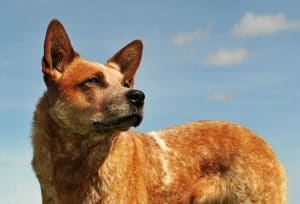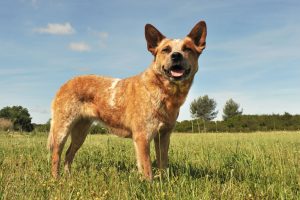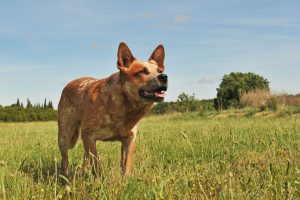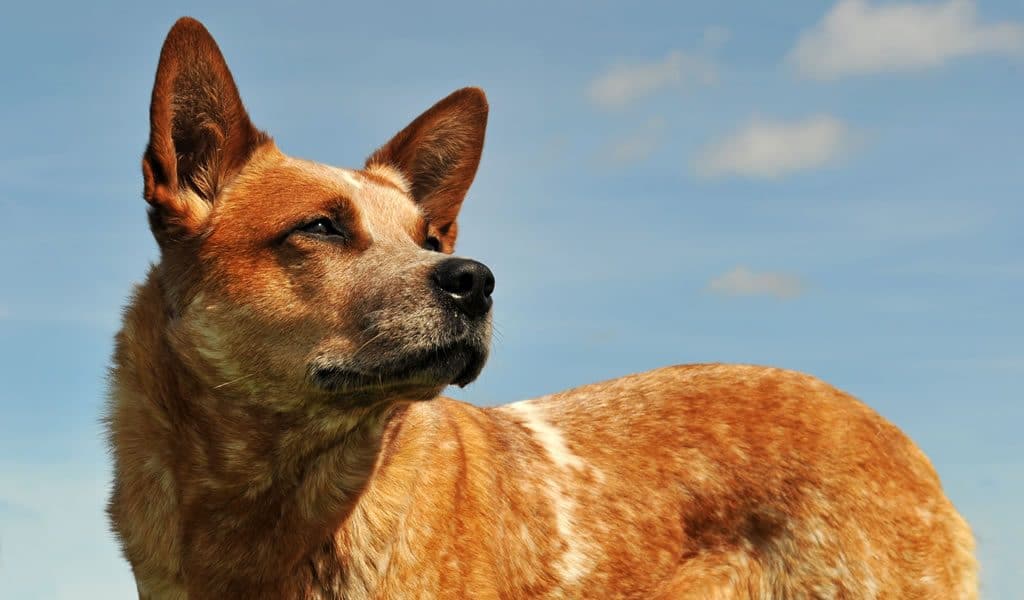
The Australian Cattle Dog (ACD) was developed in the 19th century to herd wild cattle over long distances, when the available breeds of dogs began to prove inadequate for the demands of the burgeoning beef industry of the new settlers. Dingo, a native Australian hunting dog, was crossed with a Dalmatian, Highland Collies and the Black and Tan Kelpie to develop this versatile breed which is also known as Red Heeler, Blue Heeler and, after it was brought to the US in the 1950s, as Queensland Heeler. In 1980, ACD was fully recognized by the American Kennel Club, and in 1985 the UK Kennel Club followed suit.

Australian Cattle Dogs are compact and sturdy, weighing between 35 to 50 lbs and standing 17-20 inches tall. They have alert eyes and upright ears, and have a long, undocked tail. Red (speckled with red marks) and blue (with or without black, brown or white speckles) are the two accepted colors, but chocolate and cream variations also occur. Solid color masks or patches over one or both eyes are also a common and distinct feature of this breed. ACDs without mask are known as “plain-faced,” while those with masks over one or both eyes are known as single masks and double masks respectively. Australian Cattle Dogs are double-coated, with a short, dense undercoat and a close outer coat less than 1.5 inches long; they shed during spring and fall. Their average life-span is 12 to 14 years.

ACDs are easy to groom. They should be brushed daily during shedding season and once or twice a week the rest of the year. Bred to herd and keep wild cattle in check, ACDs excel at canine sports and require vigorous exercise to keep from getting bored. In addition to a brisk daily walk, herding and agility training, playing fast games, learning tricks and running alongside bicycles are some recommended activities for this active and highly intelligent breed. ACDs are bright and independent and require training and early socialization to learn the right rules and habits. They respond well to training but can be hard to motivate, so training and exercise should be interesting and challenging. ACDs are very loyal to their owners and tend to be good with children, although they can exhibit herding behavior and nip at their heels.
Health problems in Australian Cattle dogs include a greater risk for developing deafness and blindness later in life. Hip and elbow dysplasia are also present, and dogs should be tested for both before breeding.


